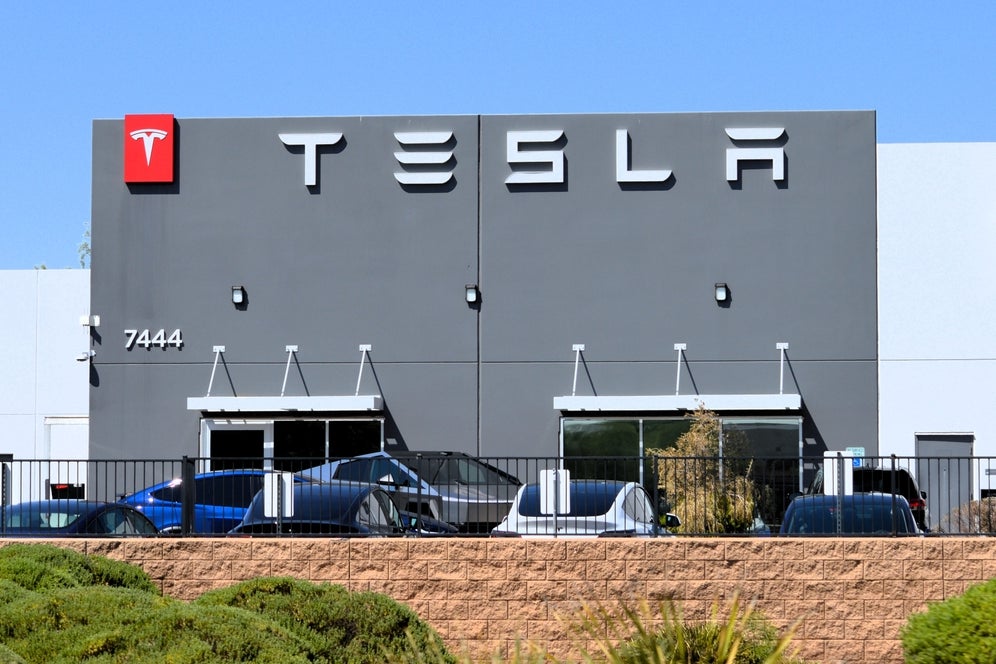Unveiling the Truth: Is Tesla’s Performance Masked by Elon Musk’s Ambitious Robot Vision?
As Tesla faces mounting scrutiny over its financial and operational performance, industry analysts question whether CEO Elon Musk’s high-profile focus on robotics and artificial intelligence is diverting attention from core business challenges. Ross Gerber, CEO of Gerber Kawasaki Wealth Management, recently suggested that Tesla’s “robotaxi dreams” may overshadow pressing issues like declining margins and production bottlenecks. This investigation examines whether Musk’s futuristic vision serves as a strategic distraction or legitimate growth pathway for the electric vehicle pioneer.
The Robotaxi Paradox: Innovation vs. Fundamentals
Musk’s August 2023 demonstration of Tesla’s humanoid robot, Optimus, marked the latest in a series of bold technological announcements. While the robotics division captures headlines, Tesla’s automotive business shows signs of strain:
- Q2 2023 operating margins fell to 9.6%, down from 14.6% year-over-year
- Inventory turnover slowed to 45 days compared to 31 days in 2022
- Cybertruck production delays extended to nearly four years post-reveal
“There’s a dangerous pattern emerging,” warns automotive industry analyst Lila Martinez. “When Tesla faces operational challenges, we suddenly get a flashy AI demonstration or space-age product concept. It’s brilliant PR, but investors should scrutinize whether these announcements correlate with tangible progress.”
Market Realities vs. Technological Promises
Tesla’s stock performance reveals investor ambivalence. Shares rallied 135% in the first half of 2023, then gave back 25% by September amid production concerns. This volatility coincides with Musk’s shifting emphasis between core automotive business and speculative ventures:
Key milestones in 2023:
- March: Full Self-Driving (FSD) beta expands to 400,000 users
- May: Musk predicts “robotaxis without steering wheels” by 2024
- July: Q2 earnings reveal aggressive price cuts impacting margins
- August: Optimus robot demonstrates improved mobility
“The market is pricing in two different companies,” suggests hedge fund manager David Chen. “One is a premium automaker facing real margin pressure. The other is a tech moonshot company worth 10 times more. Musk’s genius is making both narratives coexist.”
Expert Perspectives on Tesla’s Dual Identity
Gerber’s critique reflects growing concern among institutional investors: “Tesla needs to prove it can grow profitably in its core business before chasing robotics fantasies. Right now, it feels like we’re watching a magic show – look at the robot hand while margins disappear behind the curtain.”
Countering this view, ARK Invest analyst Tasha Keeney argues: “Disruptive companies must invest ahead of curves. Tesla’s AI and robotics work directly enhances its autonomous driving systems, which could unlock $10 trillion in enterprise value according to our models.”
Independent research from Bernstein highlights the challenge: Tesla spends just $3,000 per vehicle on R&D compared to $5,800 for traditional automakers, yet allocates disproportionate resources to speculative projects.
The Competitive Landscape Intensifies
As Tesla navigates this identity crisis, competitors are gaining ground:
- BYD surpassed Tesla in global EV production volume in Q1 2023
- Traditional automakers will launch 35 new EV models in 2024
- Waymo’s robotaxis now operate in three major U.S. cities
“The window for technological leadership is closing,” warns MIT robotics professor Elena Rodriguez. “If Tesla’s robotics work doesn’t translate to commercial products soon, they risk being outflanked in both automotive and automation markets.”
Assessing Tesla’s Strategic Crossroads
Three potential paths emerge for Tesla:
- Focus Mode: Prioritize automotive scale and profitability
- Double Down: Accelerate robotics/AI investments despite short-term costs
- Hybrid Approach: Maintain both tracks with clearer milestones
Musk’s recent comments suggest option two: “In 5 years, Tesla’s robotics business could eclipse automotive. That’s why we’re going all in.” However, board members reportedly urged more transparency about resource allocation during August’s closed-door meetings.
What Investors Should Watch Next
The coming quarters will prove critical for Tesla’s narrative:
- Cybertruck production ramp quality and speed
- FSD adoption rates and regulatory approvals
- Optimus robot pilot programs with manufacturers
- Energy storage business growth trajectory
As the EV market matures, Tesla faces its toughest balancing act yet: satisfying quarterly expectations while investing in Musk’s transformative vision. The company’s ability to execute on both fronts—or decide which takes priority—will determine whether it remains automotive’s golden child or becomes a cautionary tale about overextension.
For those tracking Tesla’s complex evolution, the key question remains: Are we witnessing visionary leadership or misdirection? Share your perspective on this high-stakes corporate drama using #TeslaRealityCheck on social media.
See more Business Focus Insider Team

